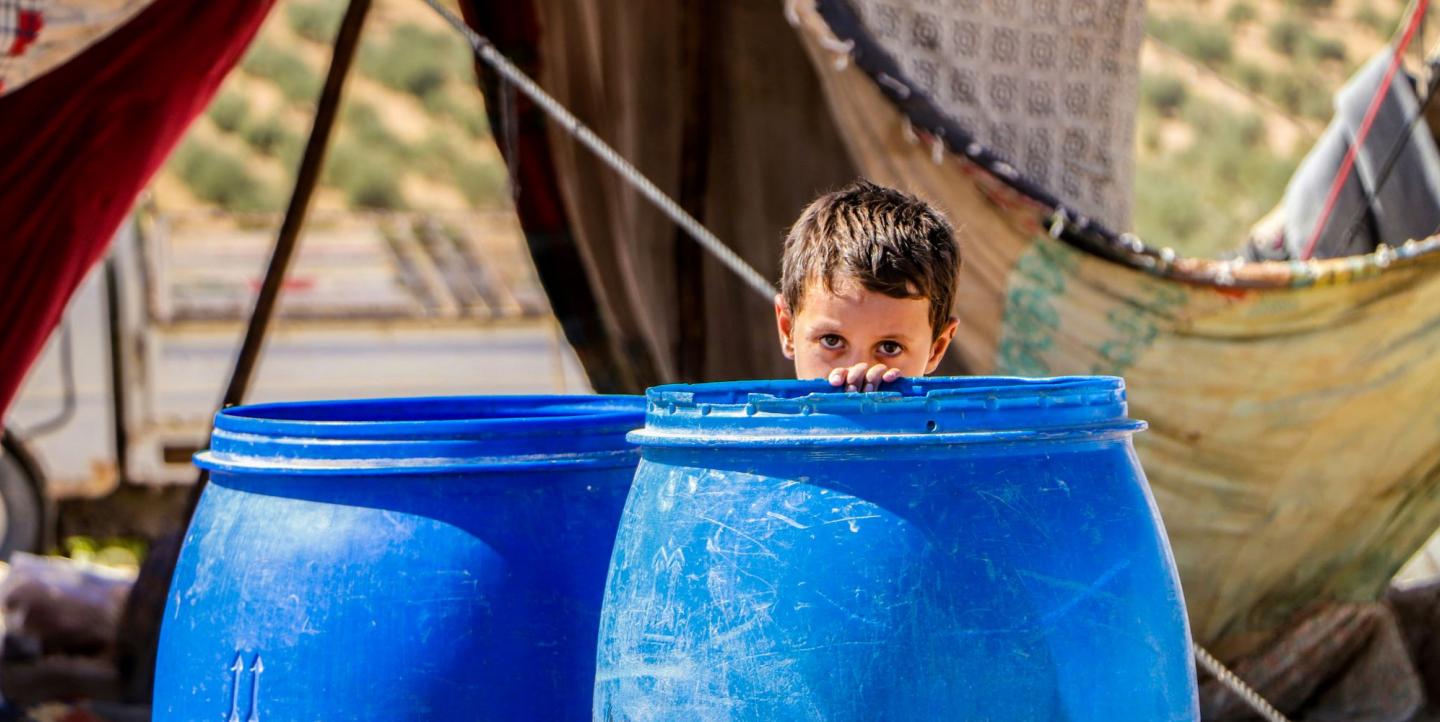Nearly 500 million children globally – roughly one in six – live in conflict zones today. Although they represent 25% of the world’s population, children account for almost half of the world’s refugees.
When reporting on children in conflict zones, journalists must take care to consider children’s rights and minimize harm. Their reporting must also be "trauma-informed" – based on understanding what a trauma survivor is experiencing, and letting this guide how they interview and photograph survivors.
“[When] we are working in very sensitive areas, crisis areas, our mission and our coverage shouldn't make children’s lives harder. It's already very hard and it's already very difficult,” said Hadeel Arja, the founder of Tiny Hand, an independent digital media platform that reports on children in conflict zones, explained during an IJNet Crisis Reporting Forum session.
Arja recently released a new guide titled Children First, produced with the support of IJNet Arabic's Mentoring Center for Media Startups, to help journalists ethically cover children in conflict zones. She was joined by Dr. Kate Porterfield, a consulting psychologist at the Dart Center, to discuss best practices for journalists reporting on children in conflict zones. The panel was moderated by Irene Caselli, senior advisor for The Early Childhood Reporting Initiative at the Dart Center and contributor to the guide.
Here’s what they had to say about conducting trauma-informed reporting on children in conflict:
Understanding trauma
Children First offers advice from veteran journalists, photographers and psychologists on how to approach visual depictions of children in conflict, how to cover massacres, and when and how to interview a child. The guidelines provide insight into balancing sensitivity and objectivity, and ensuring the dignity of children’s stories.
Understanding trauma and trauma-informed journalism is key to reporting on sensitive stories. “The human experience of violence, of powerlessness, of being harmed, of living through a natural disaster, leave[s] an incredible imprint on people and on communities,” said Porterfield.
It’s what psychologists call a “bio-psycho-social-spiritual imprint.” Journalists must consider how human violence, cruelty and pain affect all parts of a person: “their bodies, their sense of meaning, their sense of the world and each other, and their sense of a larger belief,” said Porterfield. “Trauma-informed journalism says, ‘I'm going to notice that these folks may have been impacted in all these domains, and as I report on them, as I photograph them, as I think about them, I'm going to recognize that trauma was a force and it can't be ignored.'"
Seeking consent
When deciding to interview children, journalists must follow some fundamental rules, said Arja. If a parent is present to tell the story of their life or of their child, journalists should interview them first.
“A child’s consent is very different from an adult’s consent, and you also have to worry about consent of adults who have been traumatized,” said Porterfield. She suggested journalists approach consent by asking questions such as: “I'd like to tell your story. I'd like to take your picture, but I want to just pause a minute and think with you about whether you would like to do that or whether there's any questions you have about that.”
Critically, there are certain lines that should never be crossed, cautioned Arja. “We shouldn't post photos [or other media] of children talking about experiences of being raped or sexually harassed, or of children being recruited [into armed groups]. This can put them at risk of societal stigma or security dangers,” she said.
When approaching a child for an interview, journalists should introduce themselves and explain what they do and what they hope to document. They should explain where the story they’re working on will be published, and allow the child to feel comfortable enough to say, "I don’t want to talk to you."
Preventing future situations in which children feel exploited or regret that they shared their stories can only come from “slow, careful consideration,” said Porterfield.
For example, Arja explained that in her reporting on refugee camps, parents or guardians may push their children to speak in front of a camera without their full consent. “In such a case, we should stop doing this report,” she said.
Journalists must also be aware that children present when adults are recounting their own trauma might be “doubly exposed” to trauma, Porterfield added, such as by being traumatized by seeing their parental figure in distress. Children have lives that will exist past the moment they are interviewed. “Once something [...] is on the internet, there's limited recourse that we have. You can't scrub the internet.”
Visual representation of children
Photojournalists play a critical role in communicating stories and scenes from conflict zones, using their images to highlight humanitarian crises or reveal the atrocities of conflict on civilians. In these scenarios, photojournalists also have a responsibility to take and publish images through the lens of trauma-informed journalism.
For example, in Gaza, where nearly 15,000 children have been killed by Israel since October 2023, and 17,000 have been orphaned, graphic images of children have been published online and spread on social media. Arja defined certain “red lines” she recommends when reporting on such situations. “We don't show children covered in blood. We don't film with children without their parents or without their legal guardian,” she said. “If we want to film [children]…they should know that we are going to film this.”
While photographing children in conflict, journalists should be aware that visual depictions of children can quickly spread online and be shared without context.
Porterfield encouraged journalists to first put themselves in the shoes of both the audience and the subject before sharing a photo or incorporating it into their reporting. “Could you imagine them envisioning that picture in 20 years and saying, ‘I'm proud that when we suffered what we did, I was represented this way’” said Porterfield. “Would this child want this picture in the world in two years, 10 years, 20 years?”
Arja highlighted an example of a particularly moving picture of a woman in Gaza holding the covered body of a child very close to hers, hiding her face in her hands, as an example of a photograph that both respects the dignity of trauma survivors while remaining impactful. “Capturing this image is very challenging because Mohammad Saddam [the photographer], was surrounded by dead bodies, maybe in hospital, hearing people screaming, looking for their loved ones. But he documented that exact human moment for this woman,” said Arja.
A common human survival response to graphic images is to “turn away and to shut it [off],” Porterfield said. Trauma-informed images that take care to avoid graphic imagery can consequently be more powerful, as they show loss and human suffering in a way that people can engage and empathize with, she said.
“In kind of an ironic way, something which is so evocative of loss and grief, you can look at,” Porterfield said.
Photo by Salah Darwish on Unsplash.


